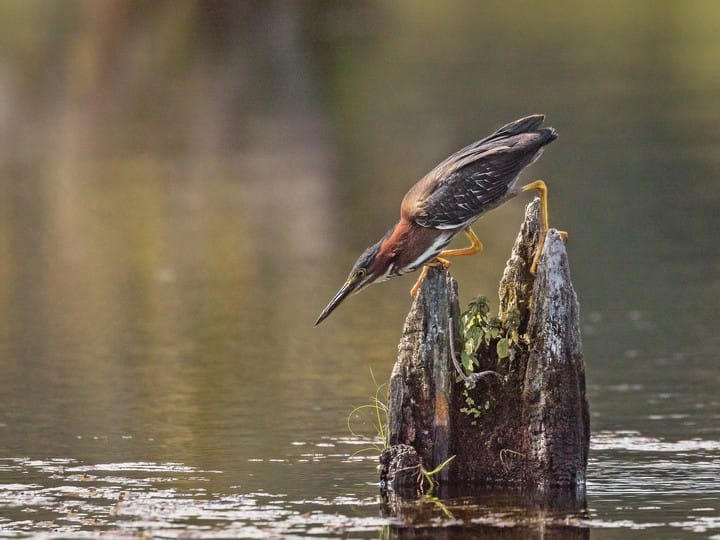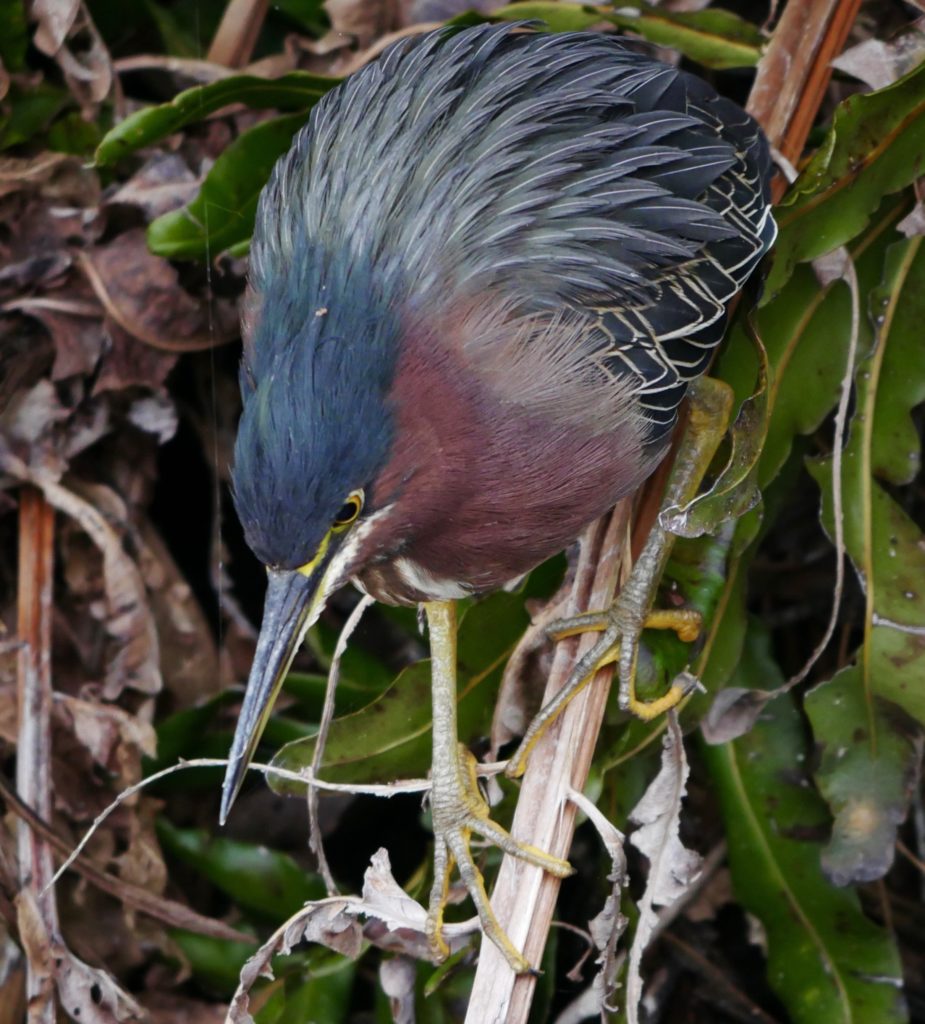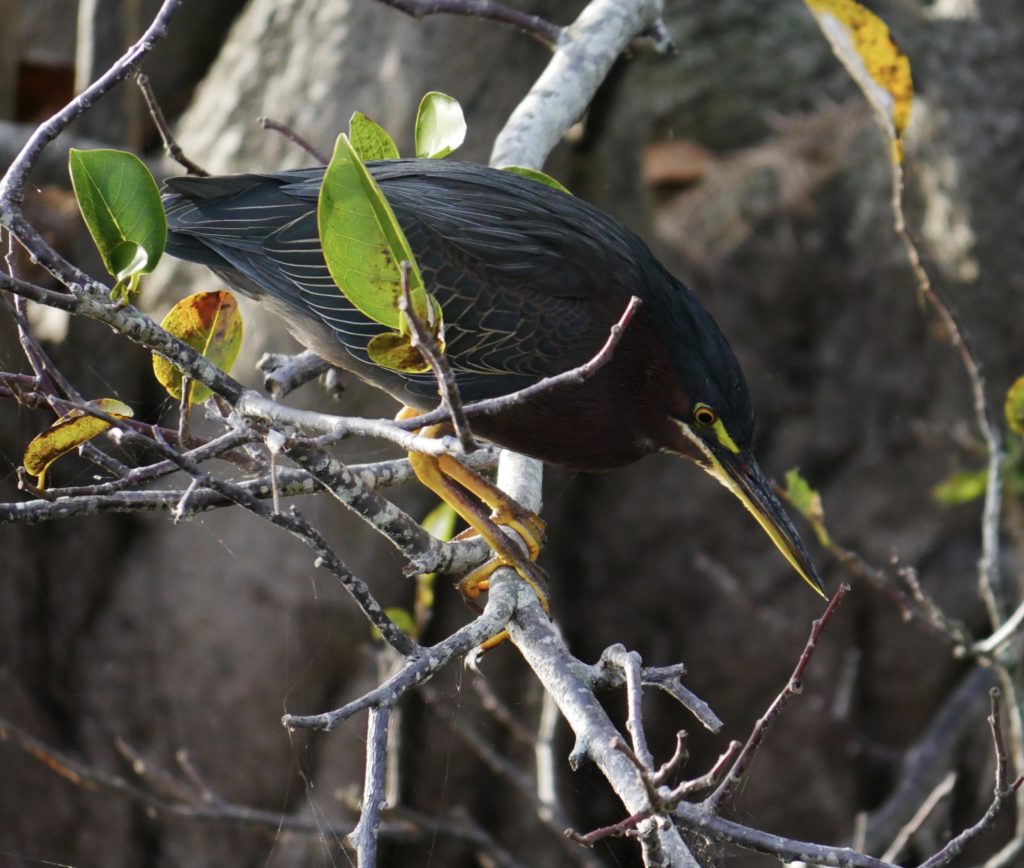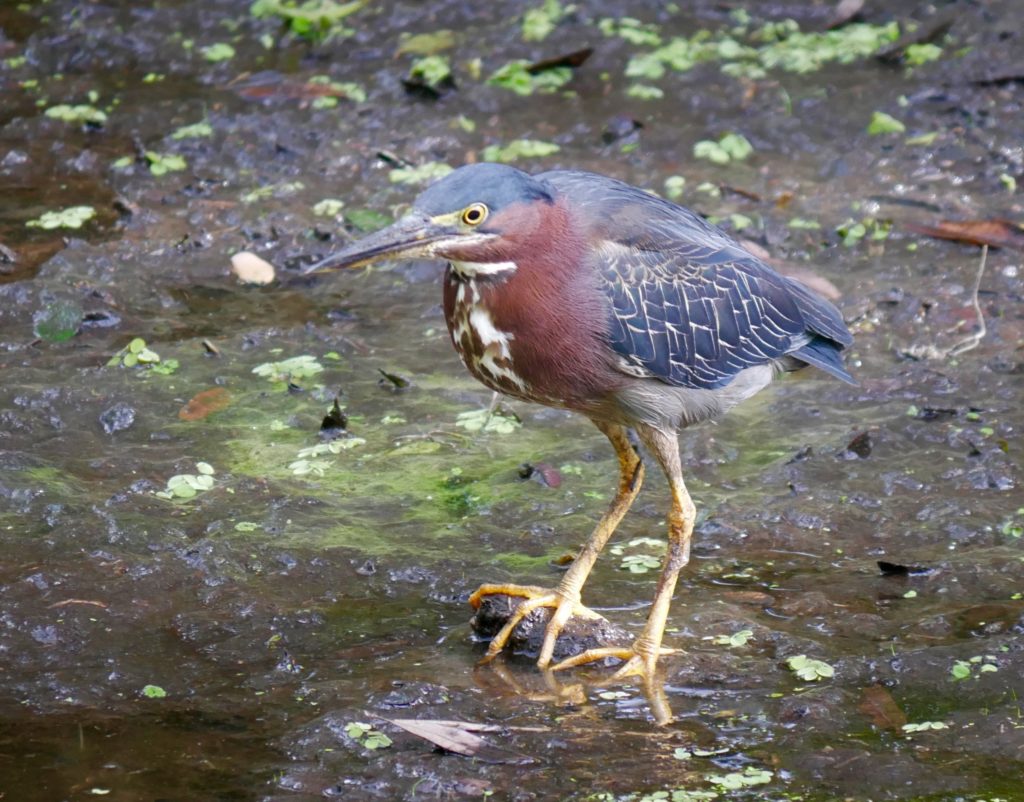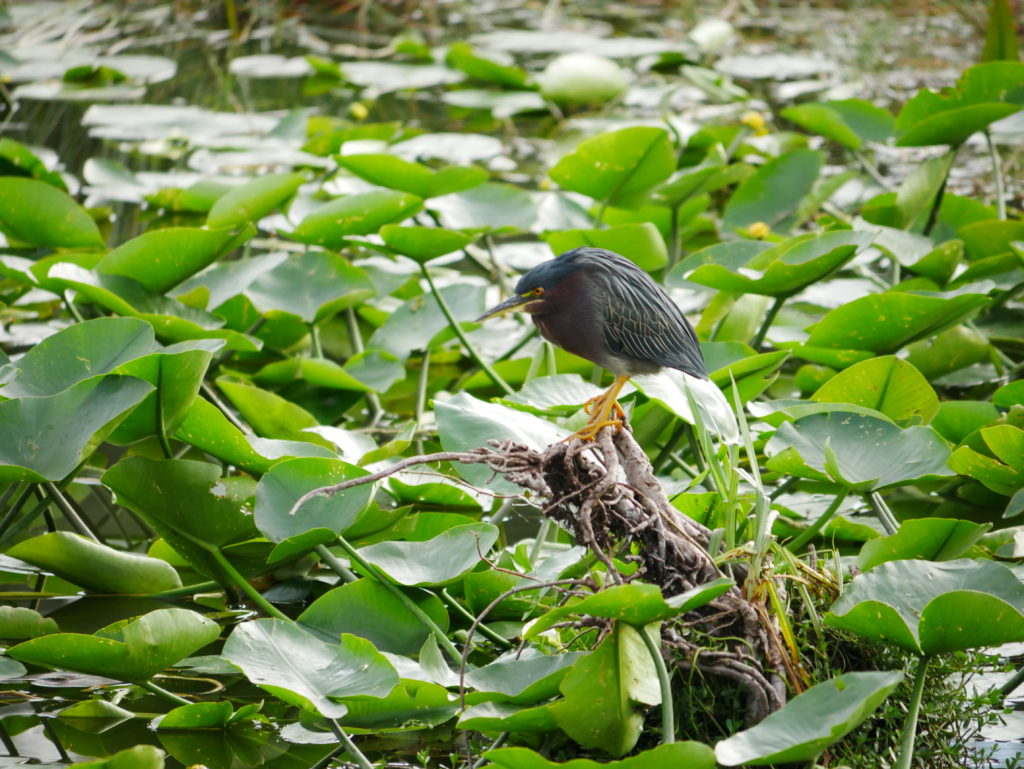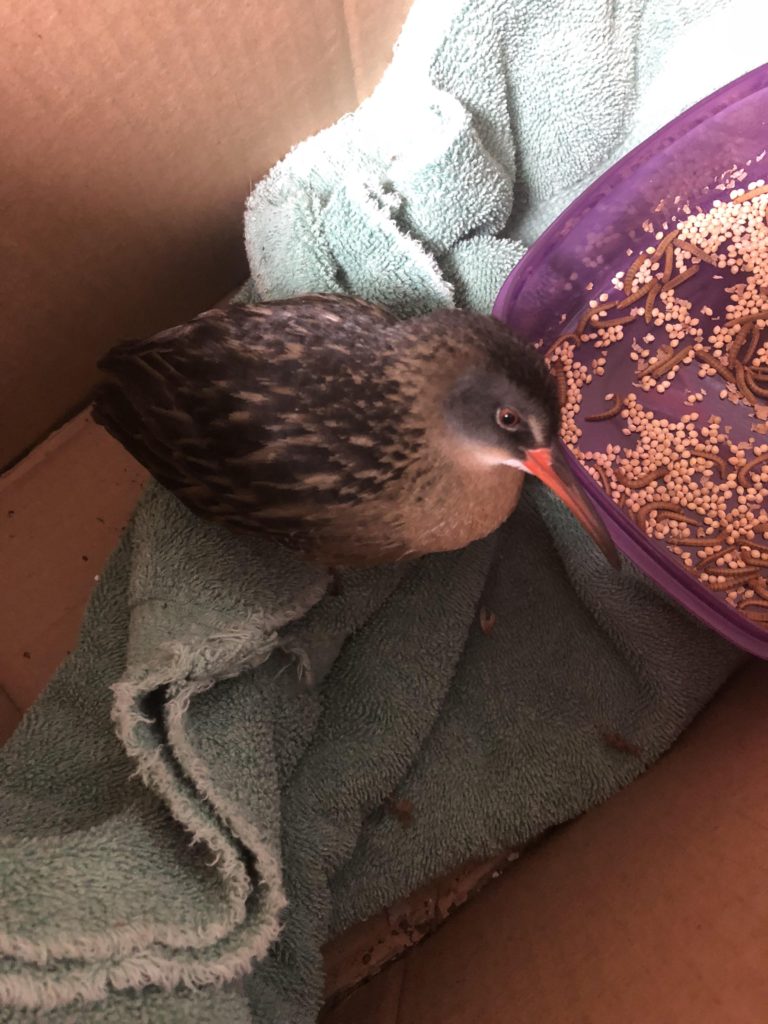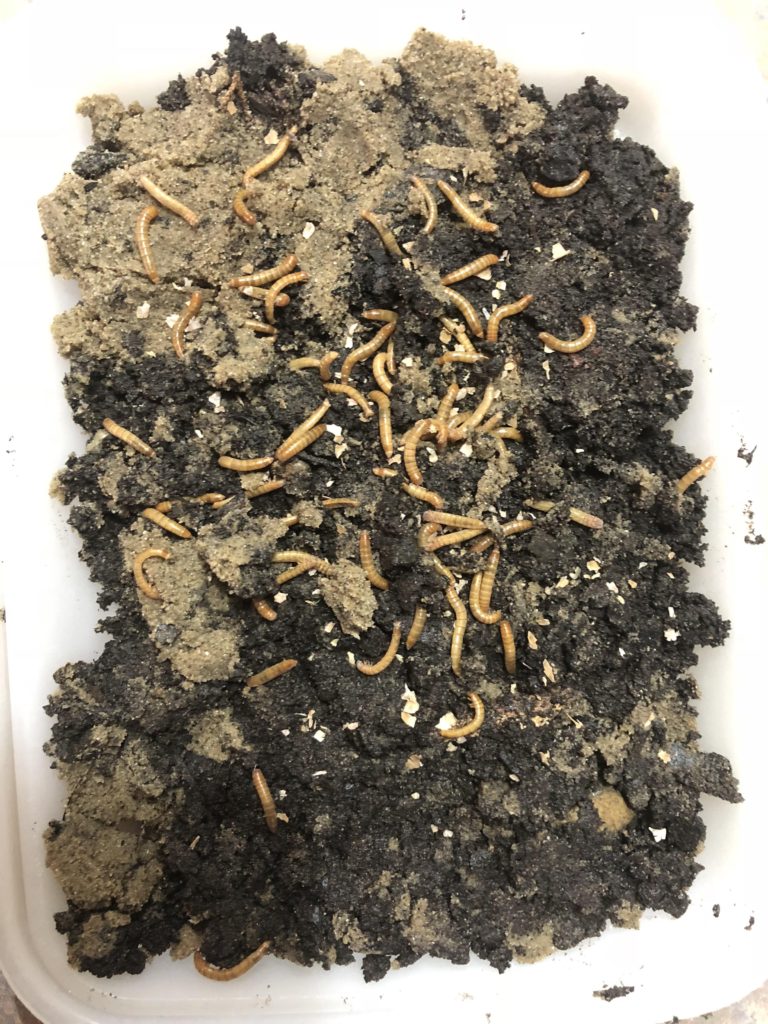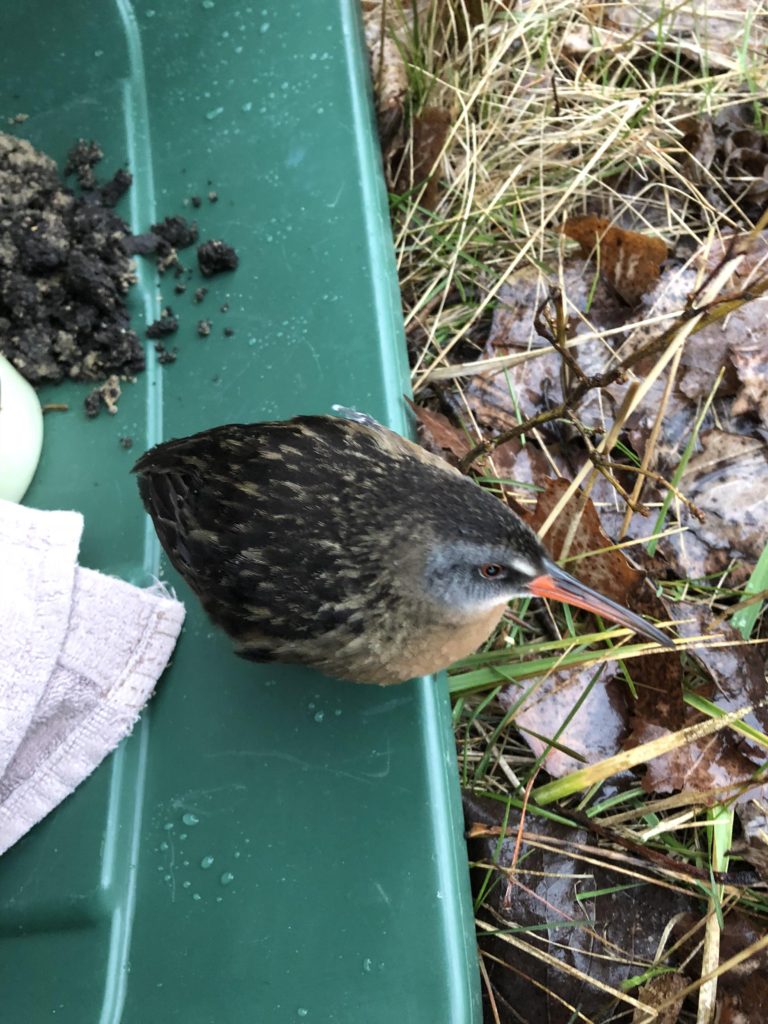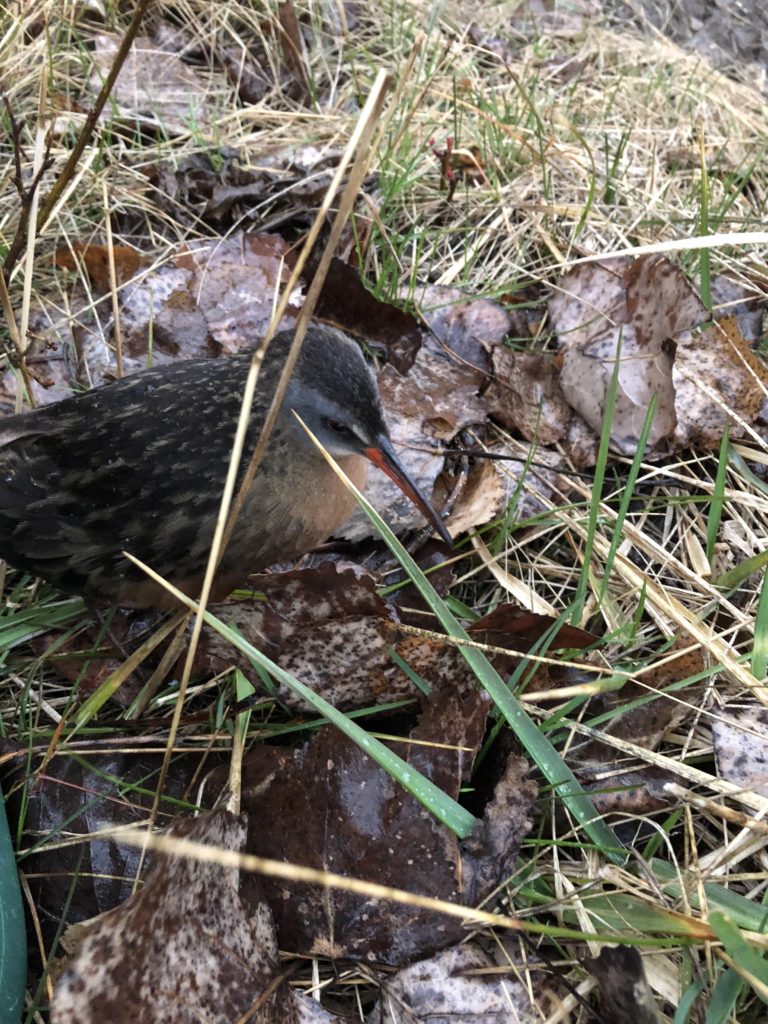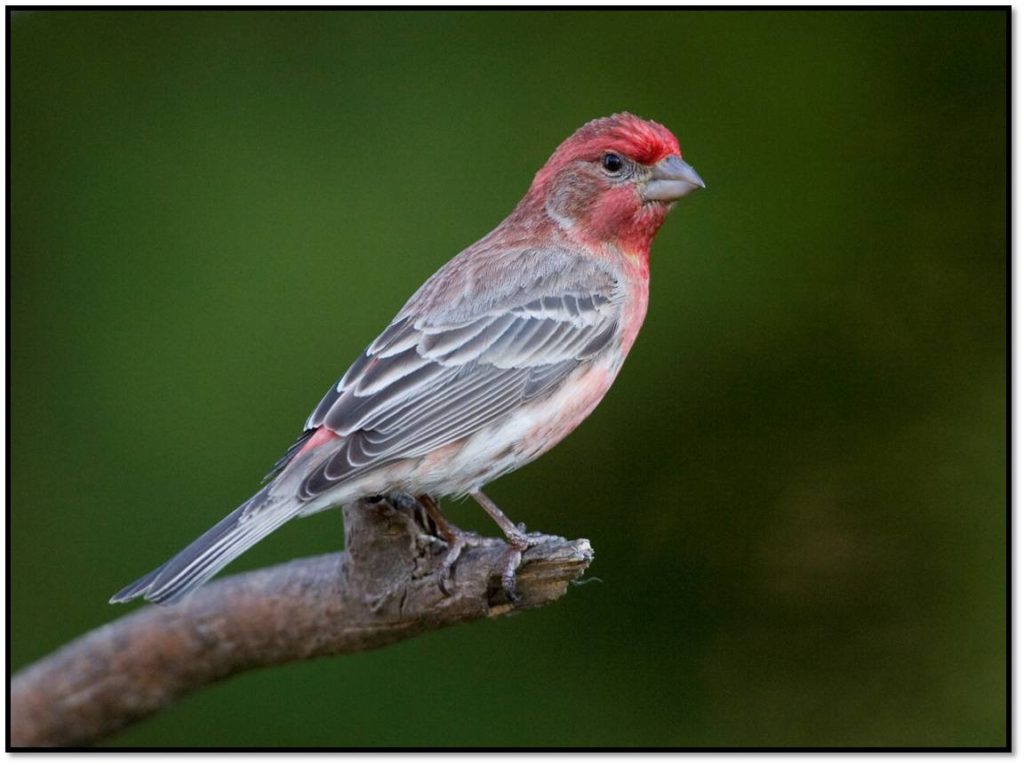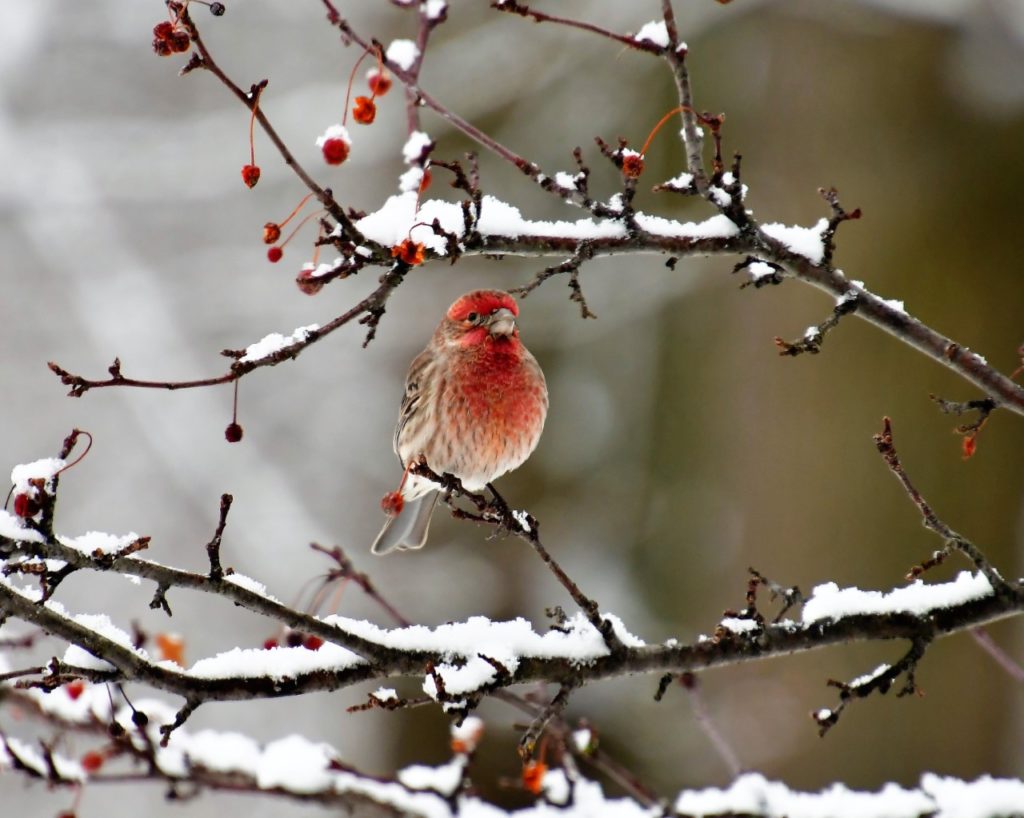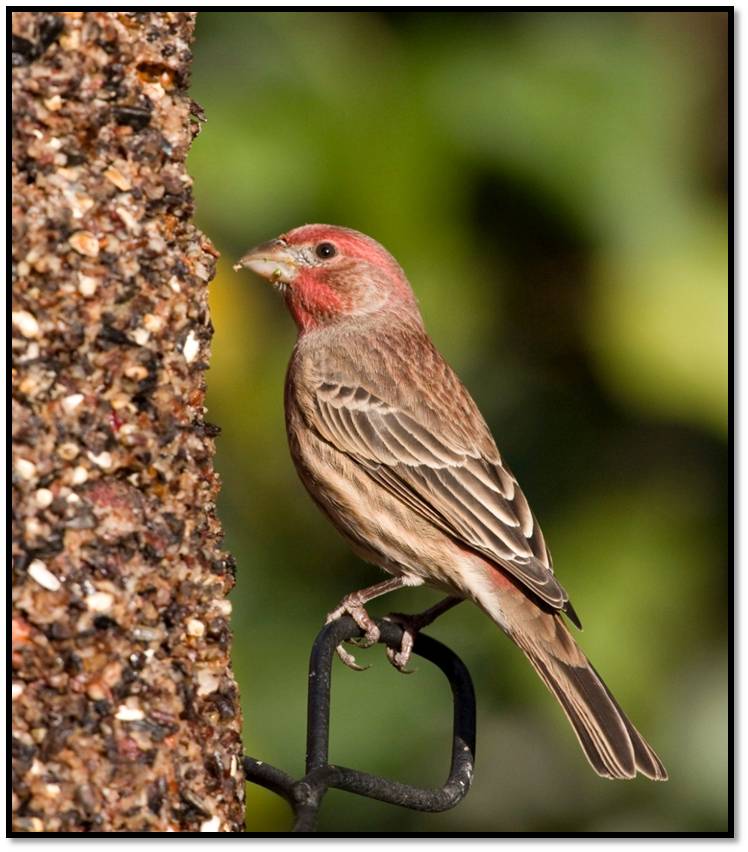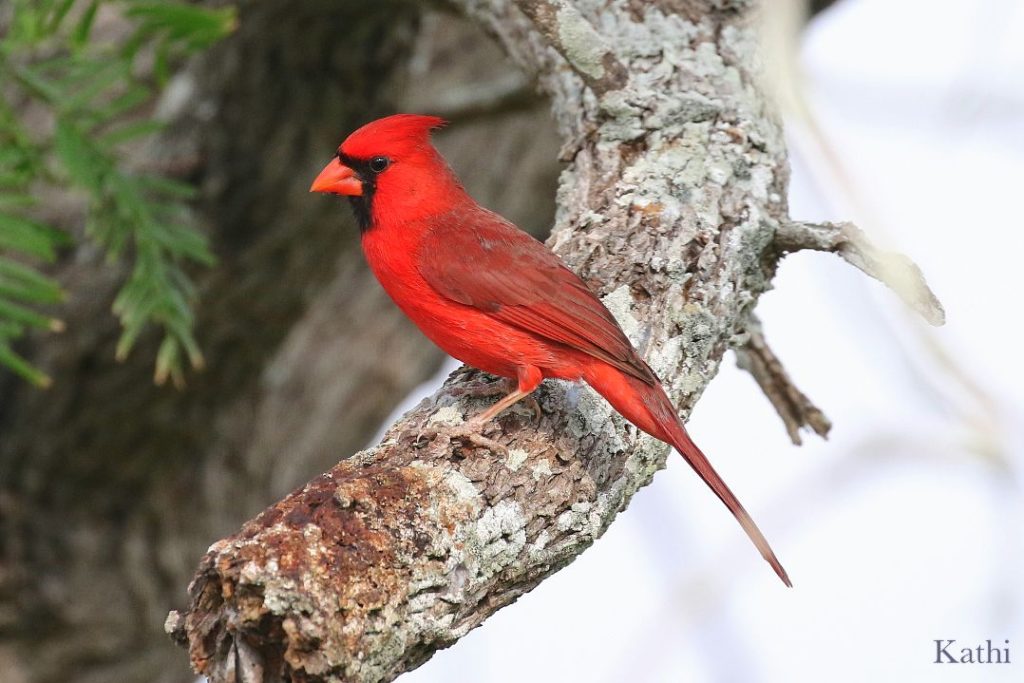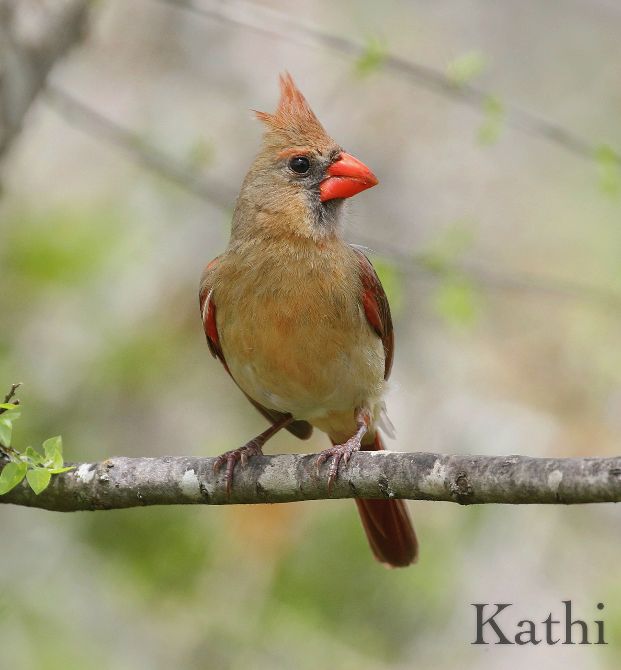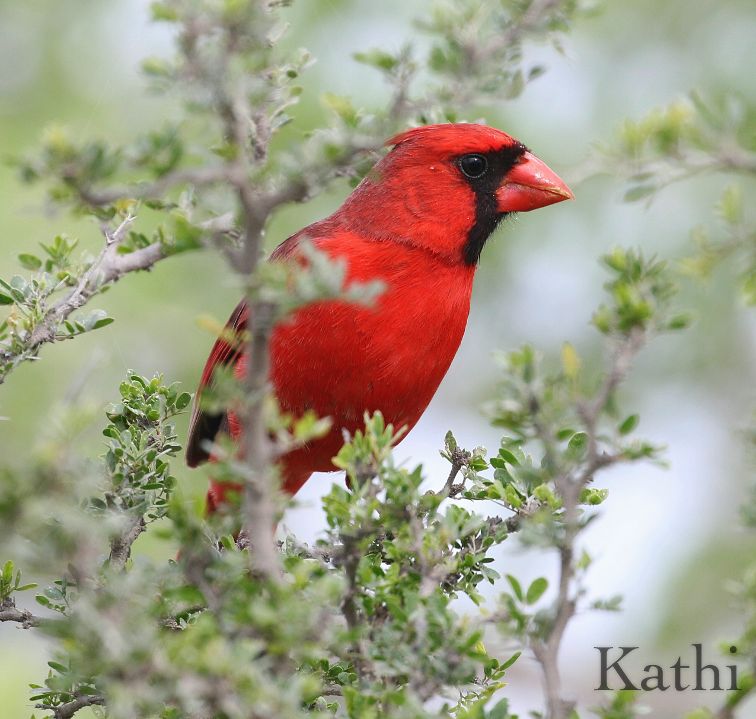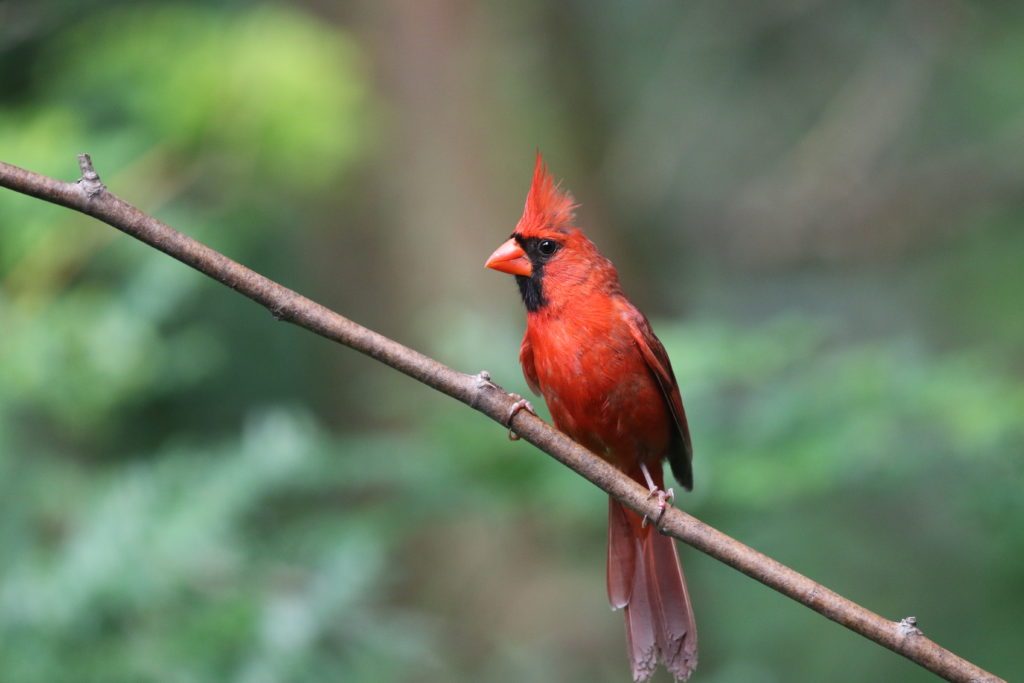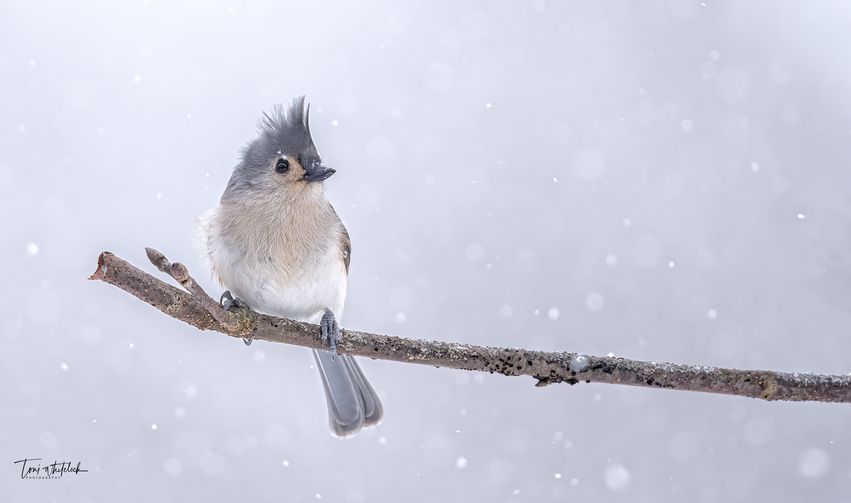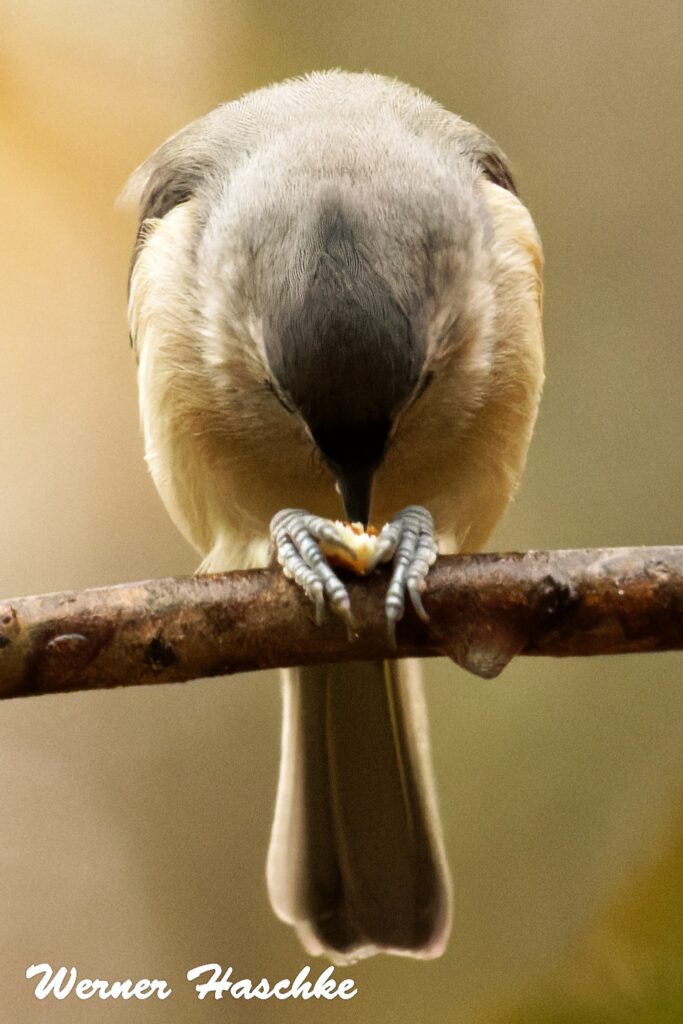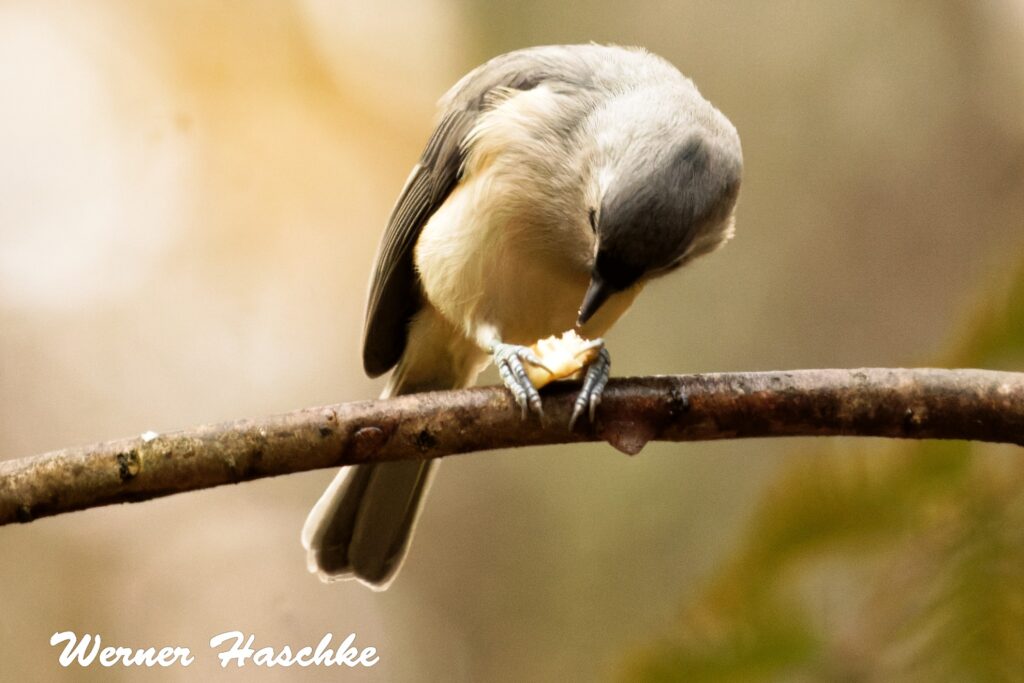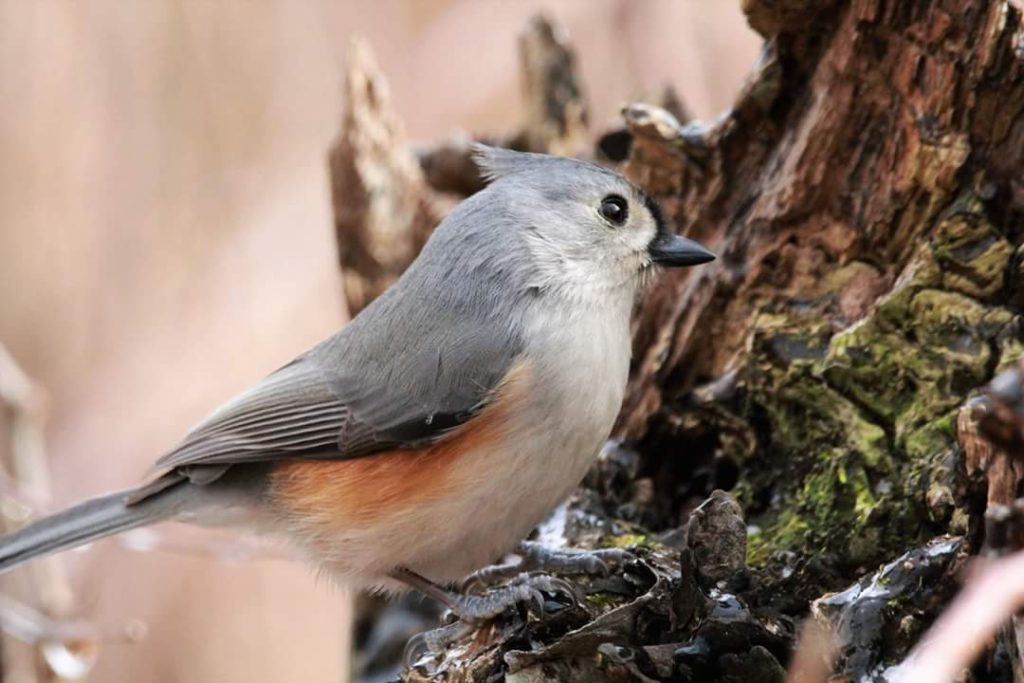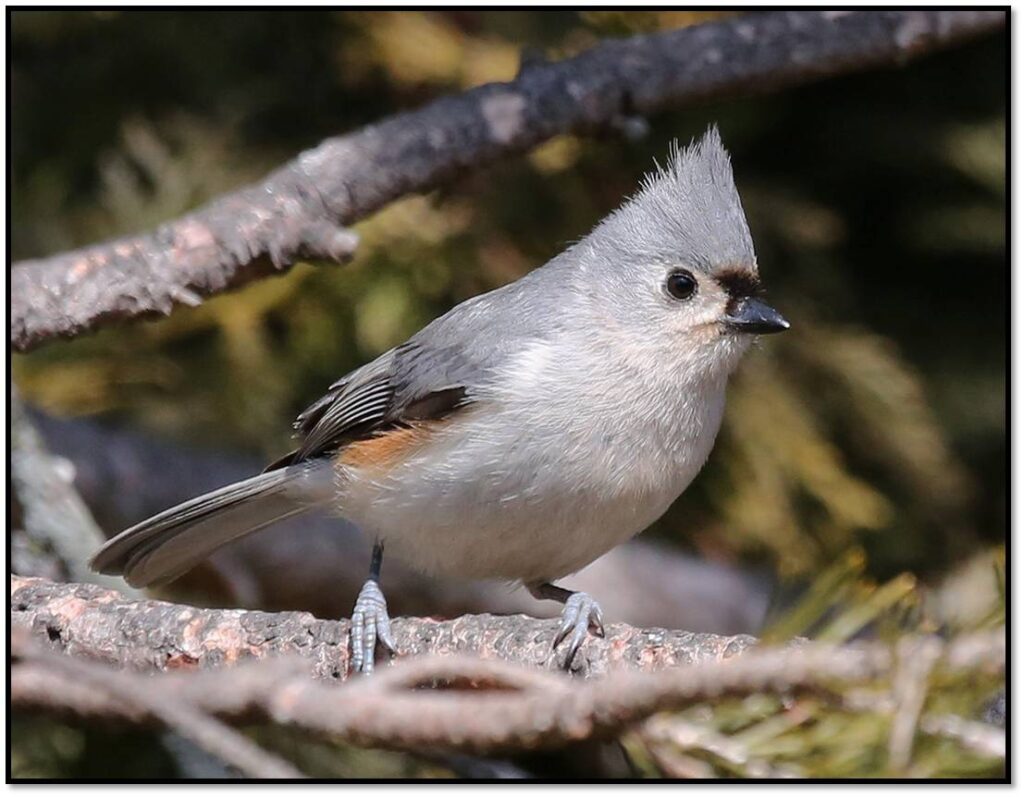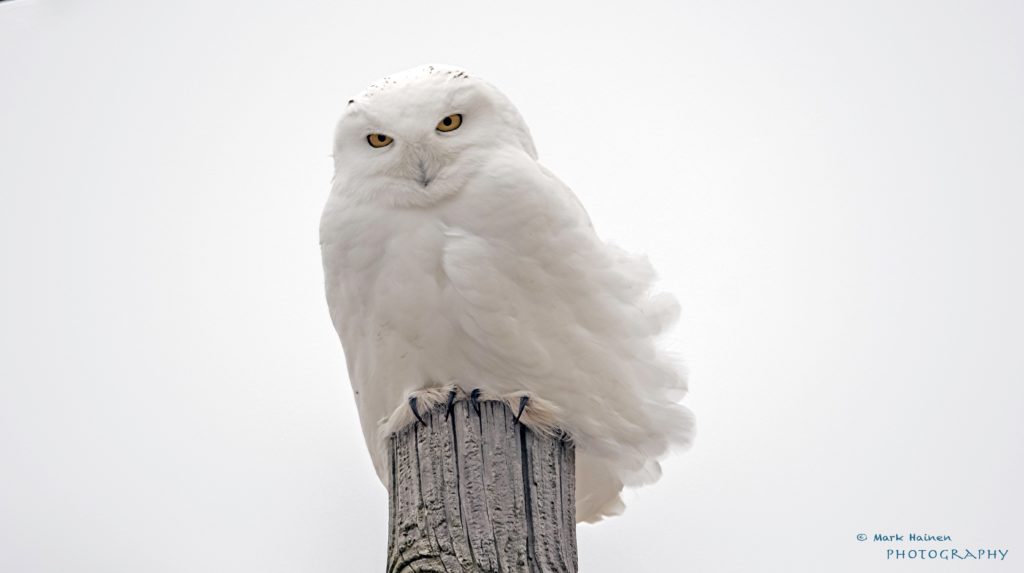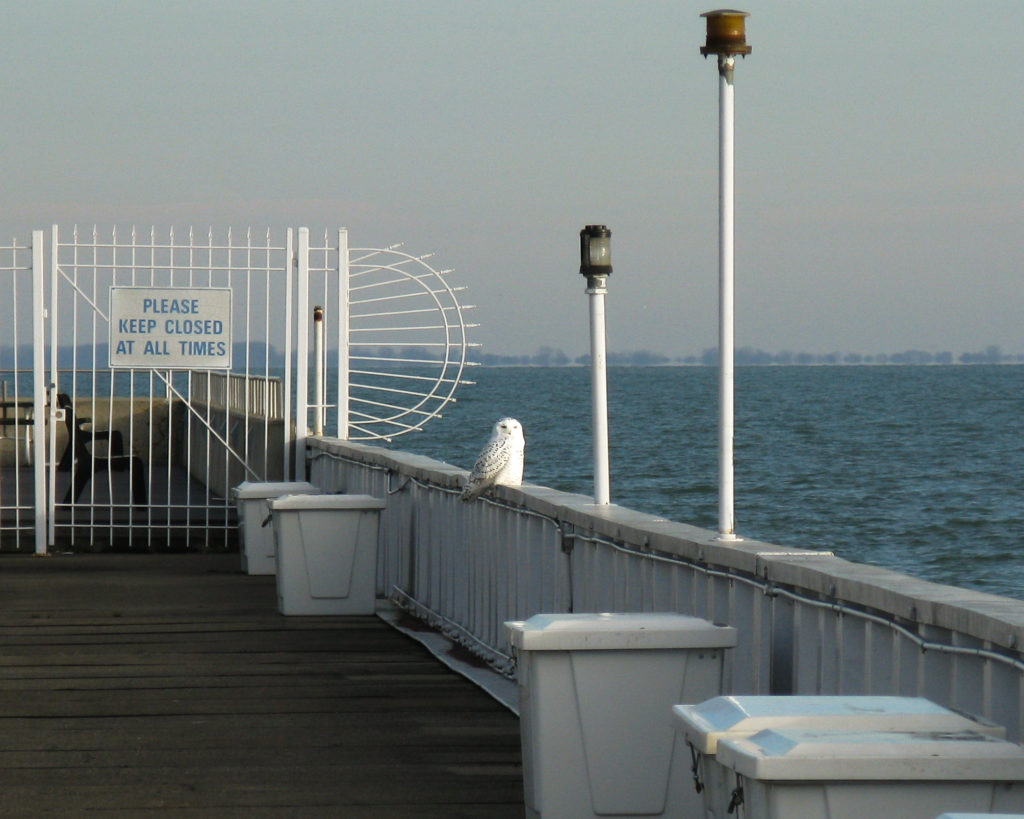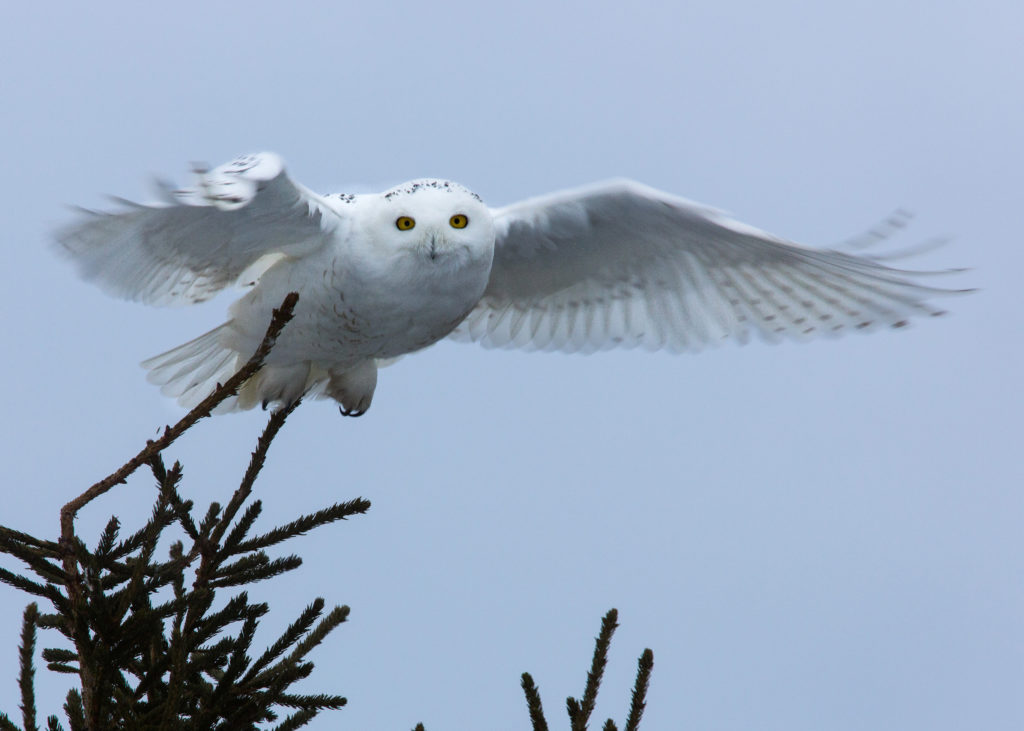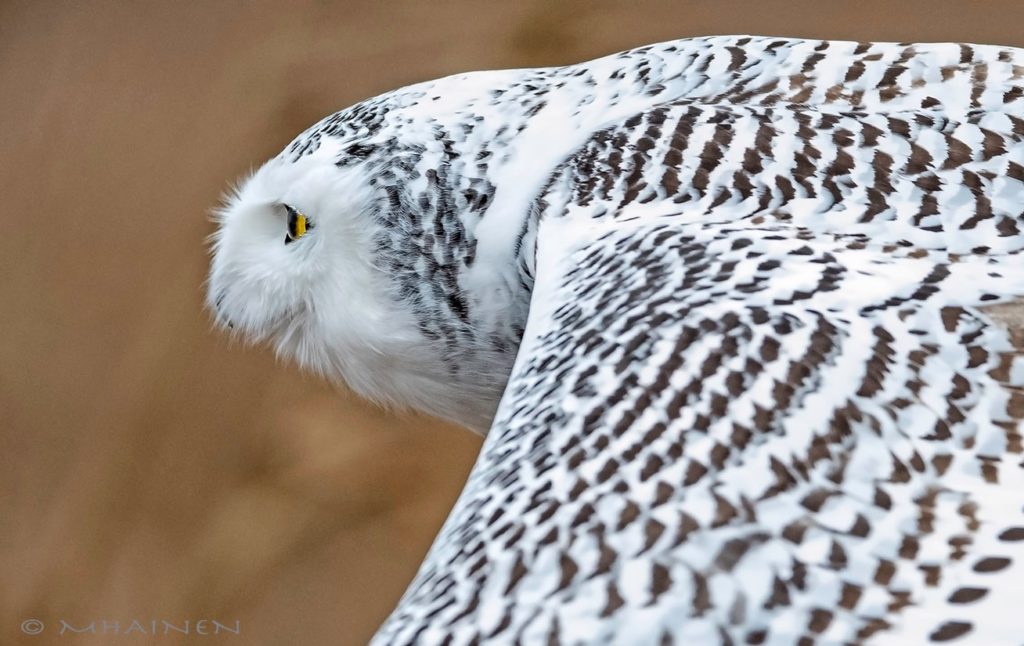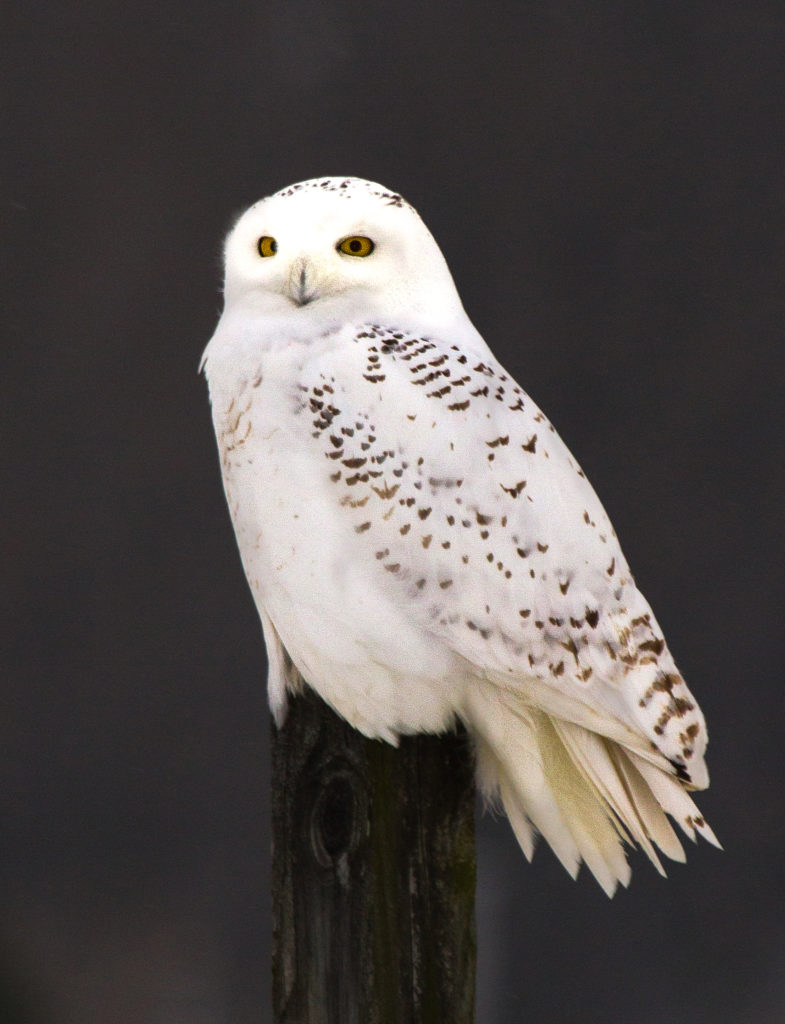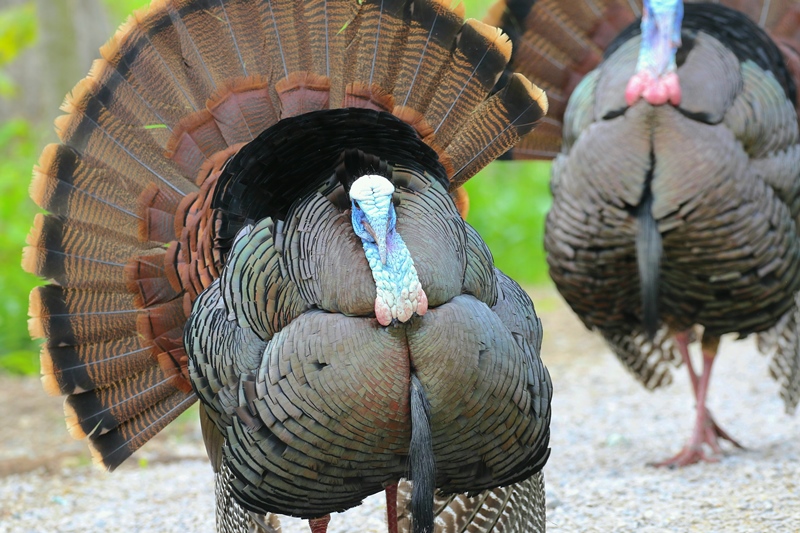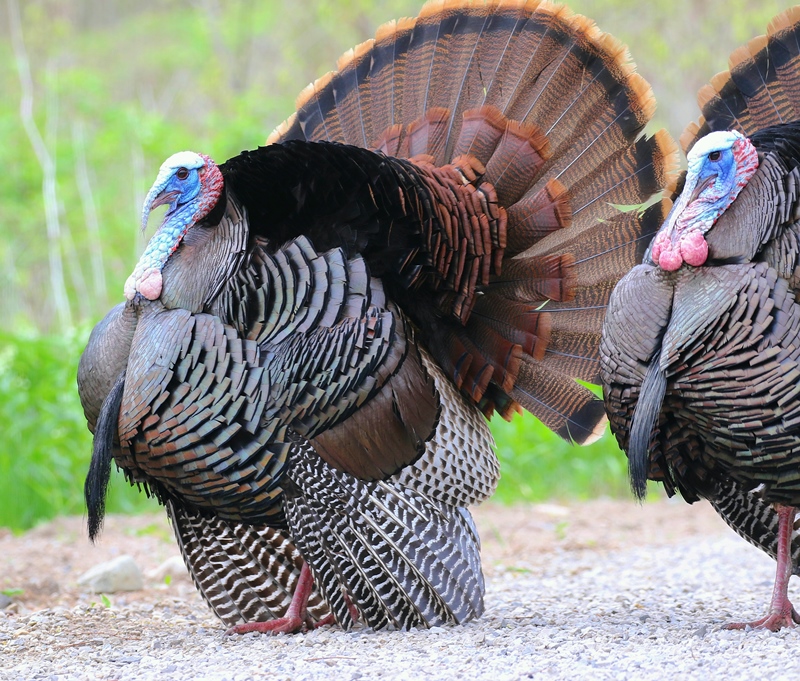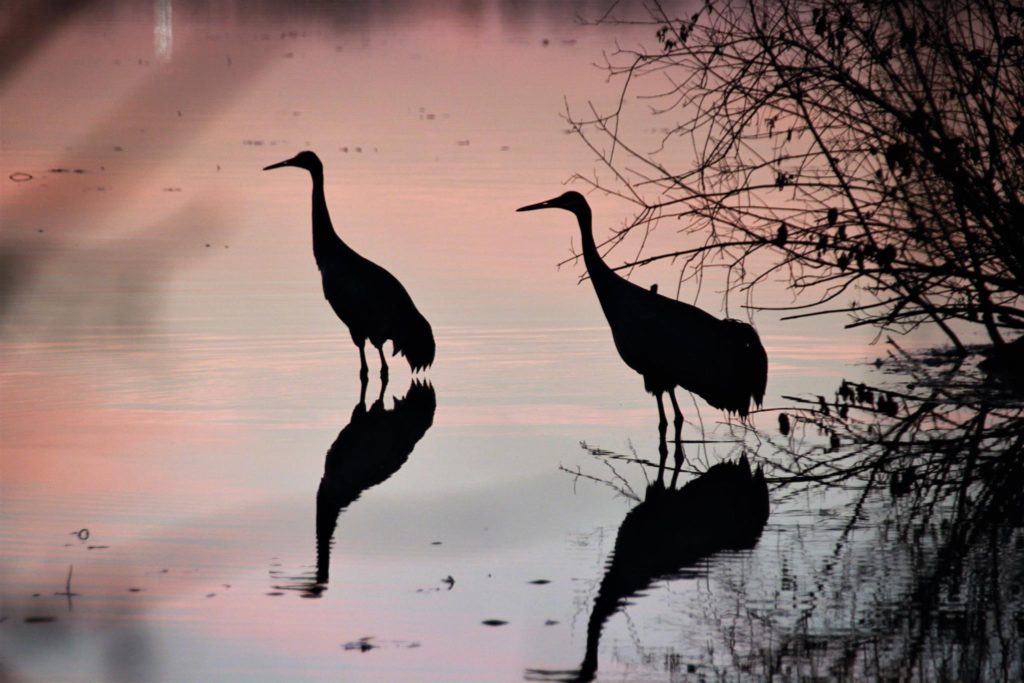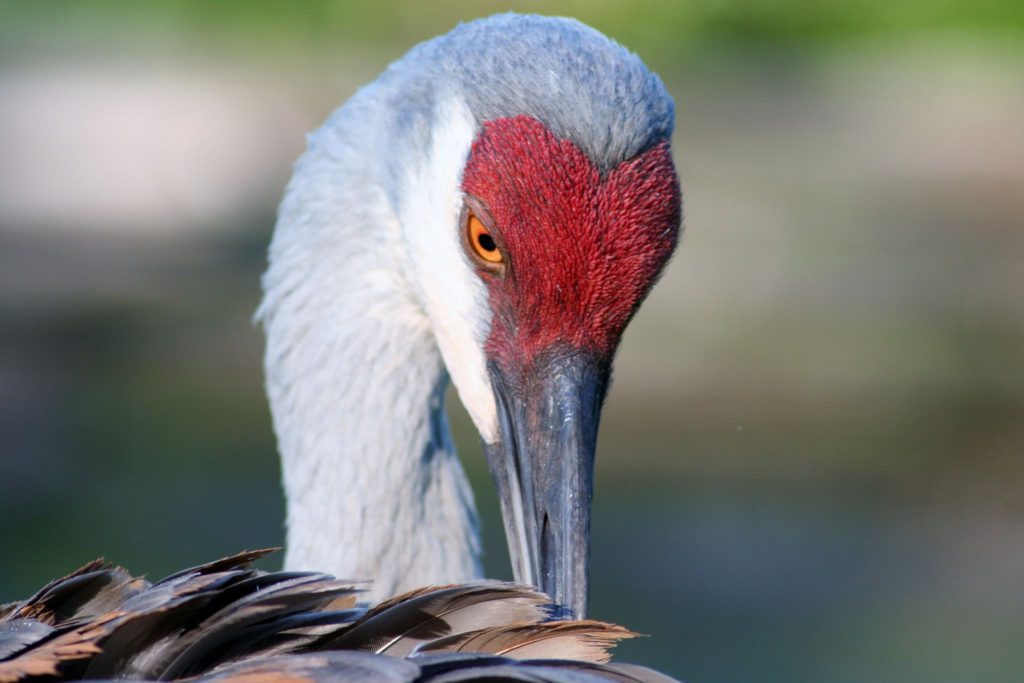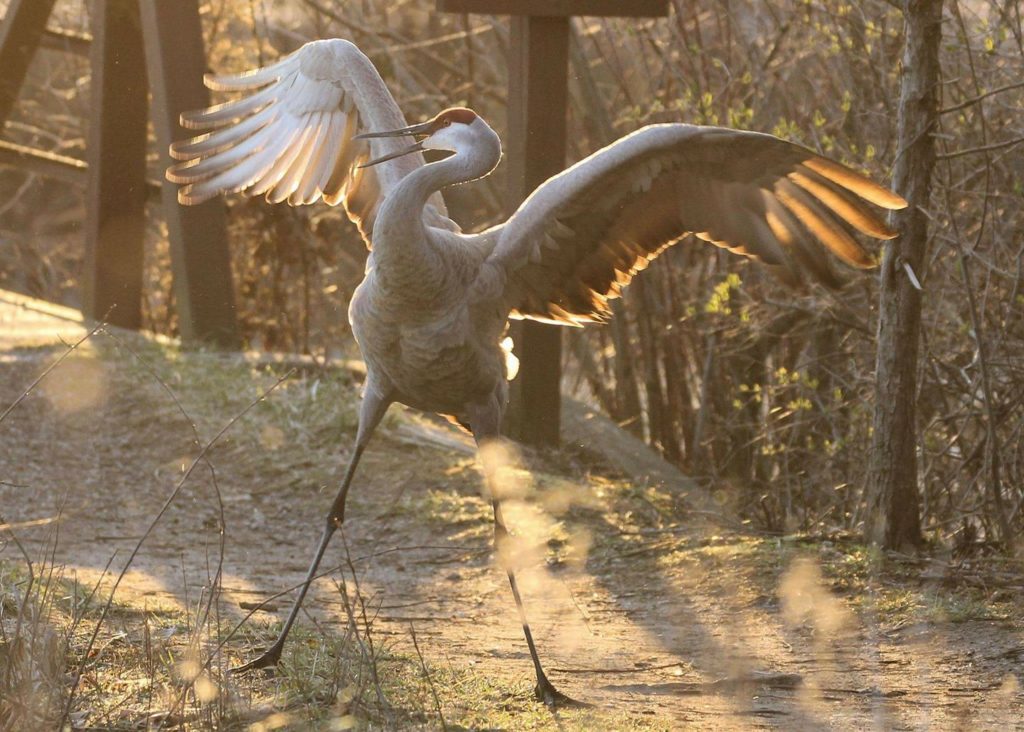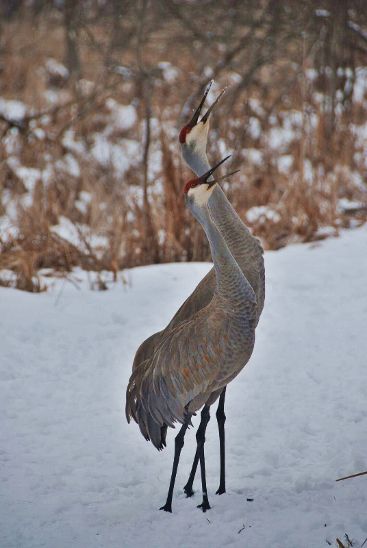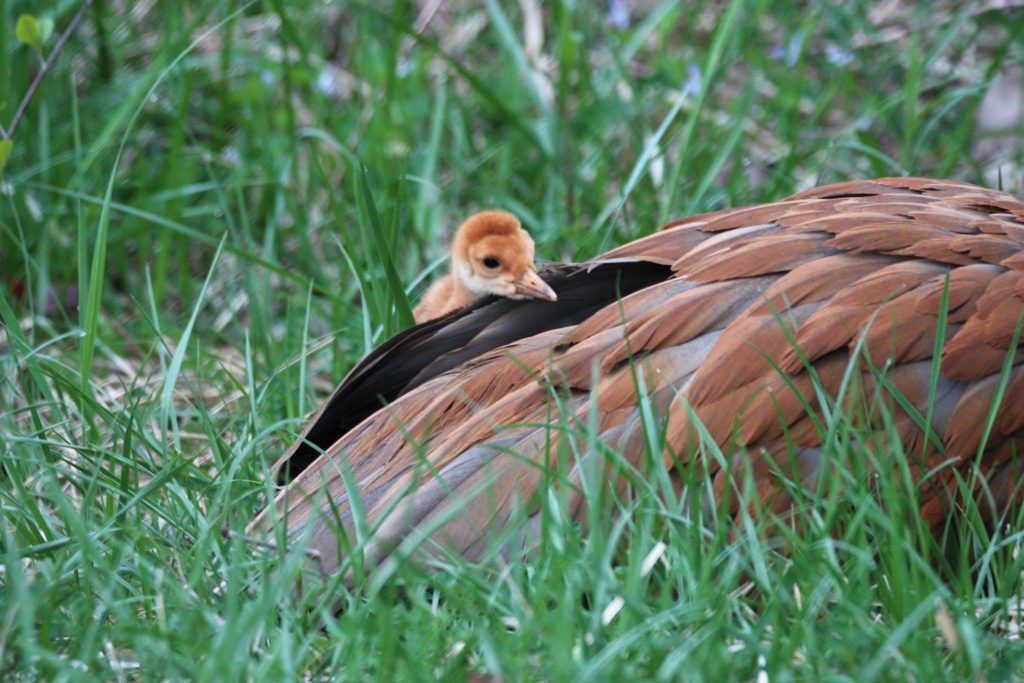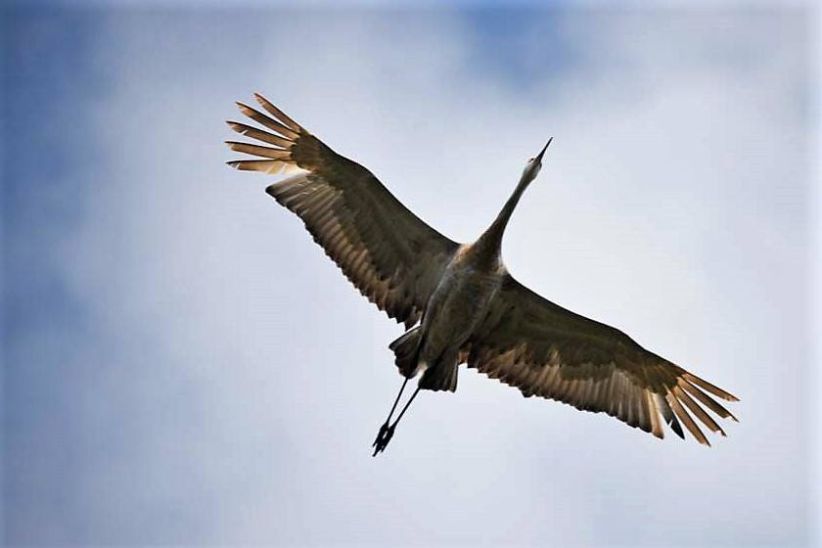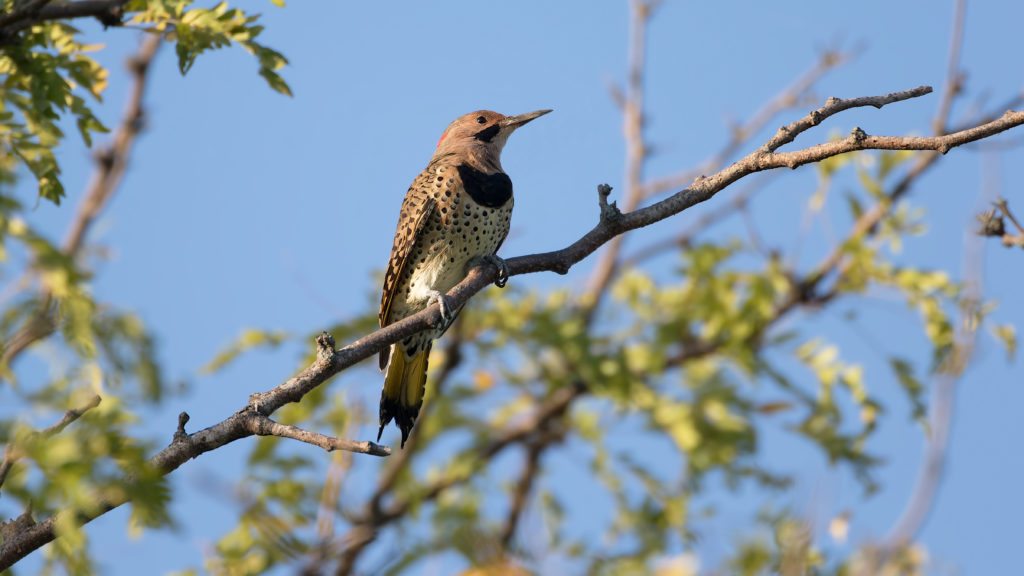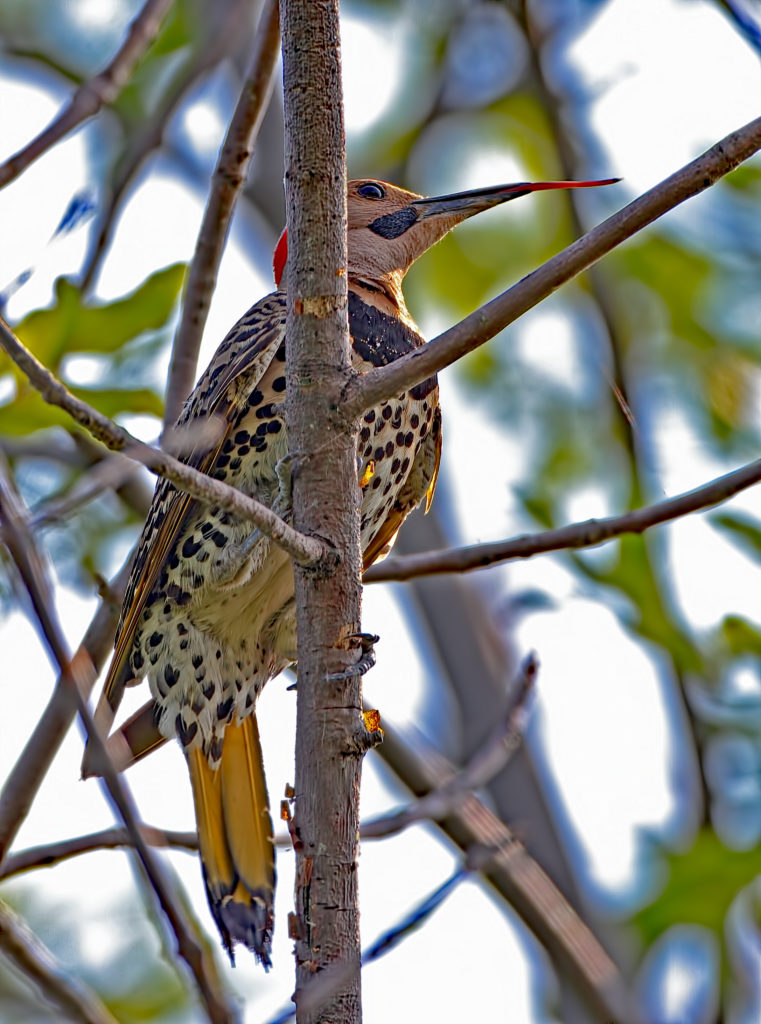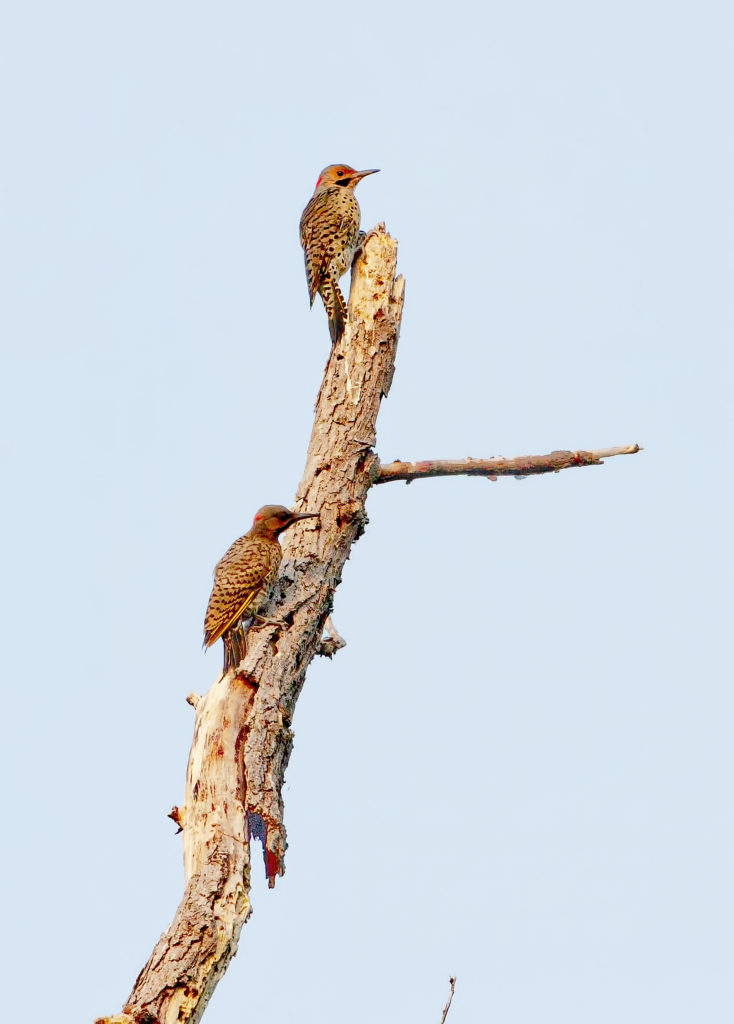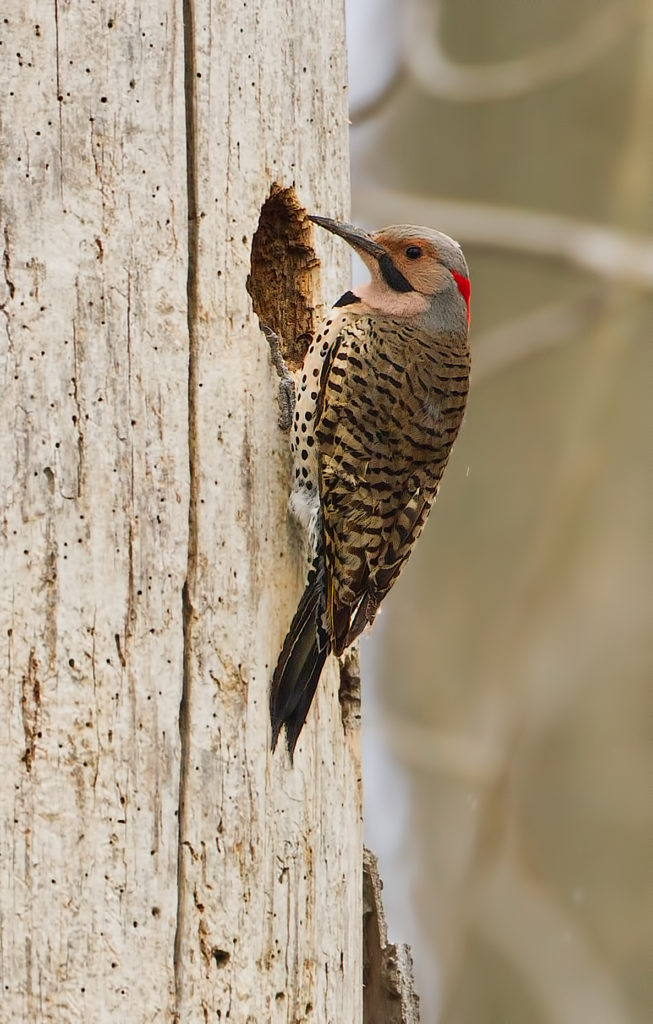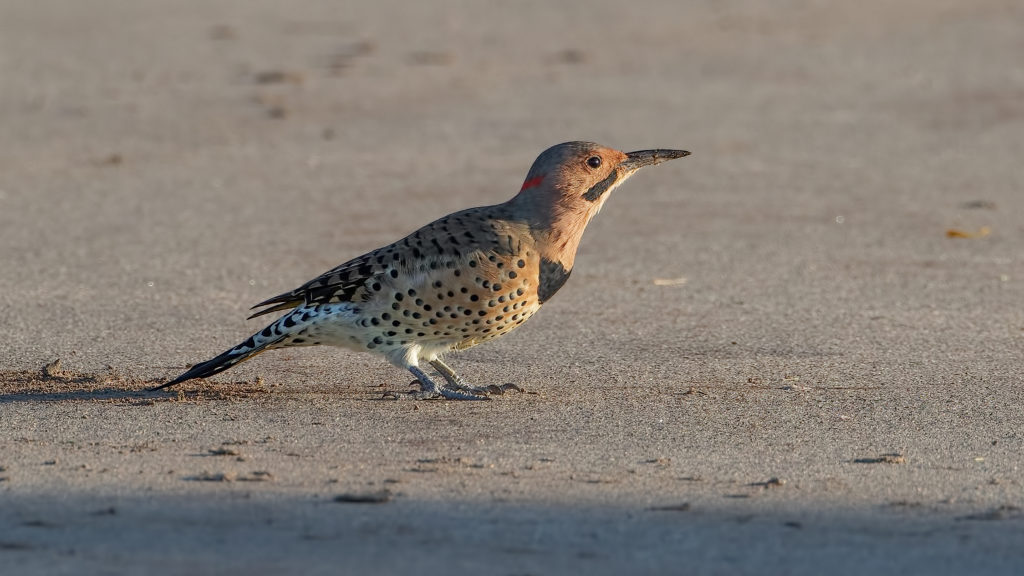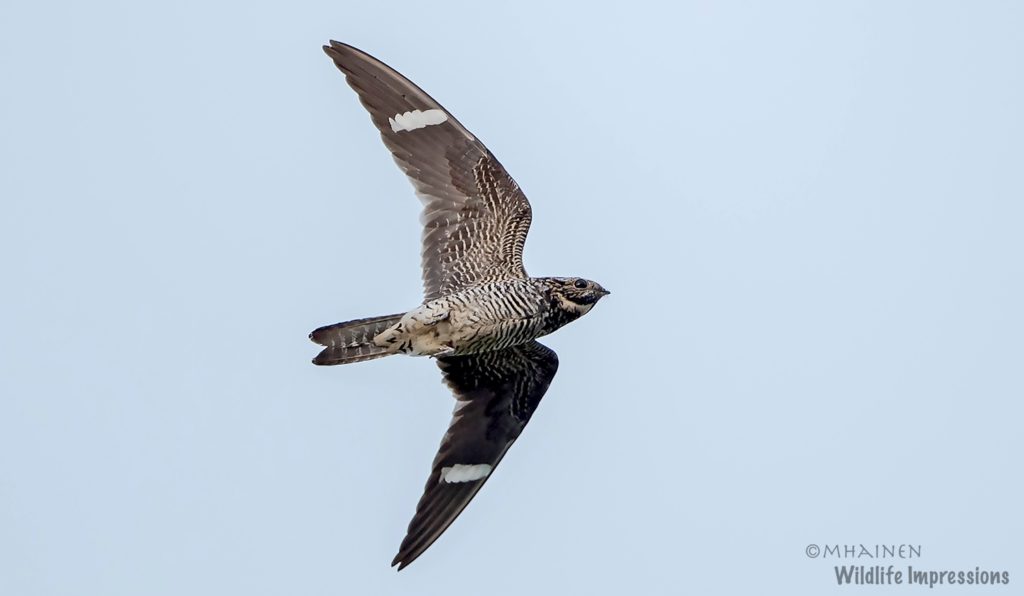
Common Nighthawk (Photo by Mark Hainen)
For me, the sounds of summer include the sounds of Common Nighthawks.
A pair of nighthawks has nested on top of Ferry Elementary School for as long as I can remember. First thing in the morning, and I mean before sunrise, I see him flying in his erratic pattern. I’m not sure of how to describe the call that accompanies the flight. I’ve seen it written as buzz BEEErzh and peent (click here to listen on Cornell’s All About Birds website).
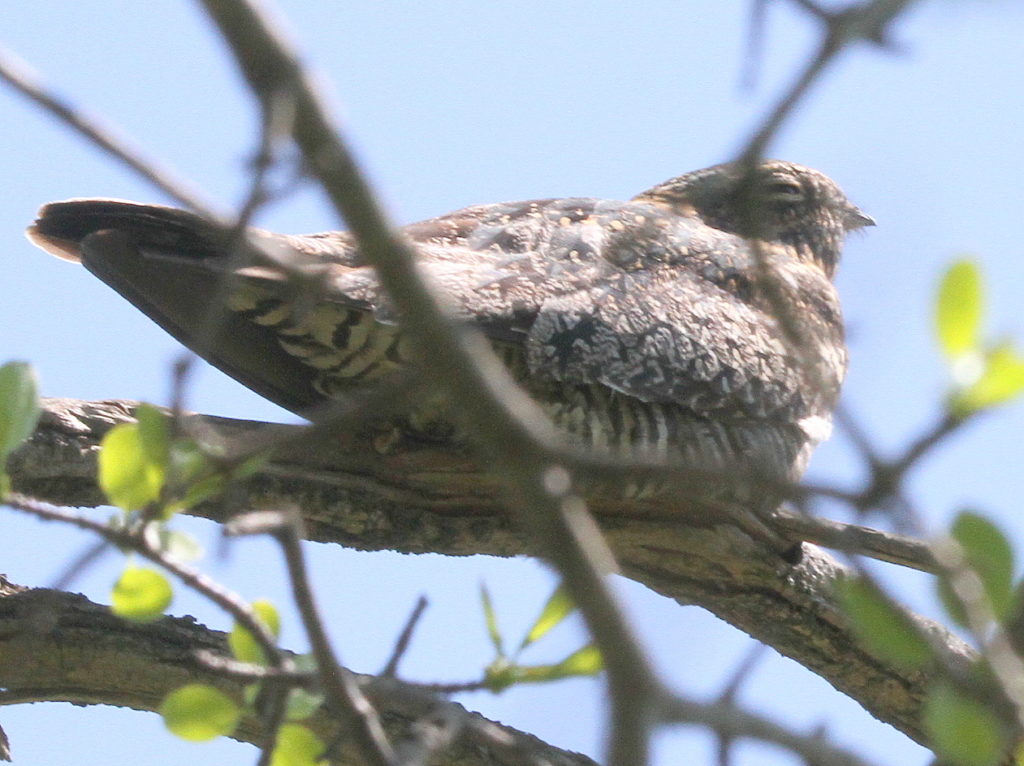
Common Nighthawk perched (Photo by Don Chalfant)
It is sharp and loud, a call to look up to the sky and wait for the wonderful sound to follow. The male nighthawk climbs higher and higher, then dives toward the ground, flexing his wings downward as he peels out of his dive. This causes a sound reminiscent of a race car rounding the edge of the track. To me, it sure sounds like vroom! This wonderful display gets repeated in the evening, a second treat for the summer day. This display serves two purposes; first, to attract a female and bond with her. It also lets other males know the territory is taken.
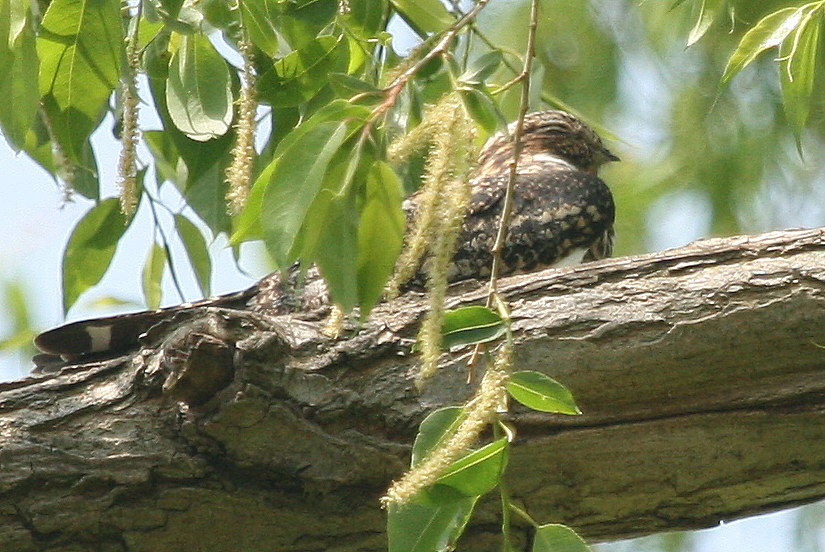
Common Nighthawk (Photo by Don Chalfant)
Field Marks
To identify Common Nighthawks, look for a slim, long-winged bird with white patches on the wing. Their pointy wings and streamlined shape make them appear larger than their measurements would indicate. Each bird is typically 9.5” long with a wing span of 24” and a weight of only 2.2 ounces. The type of flight is key – erratic and bounding – look for the white patch which is quite distinct in flight.
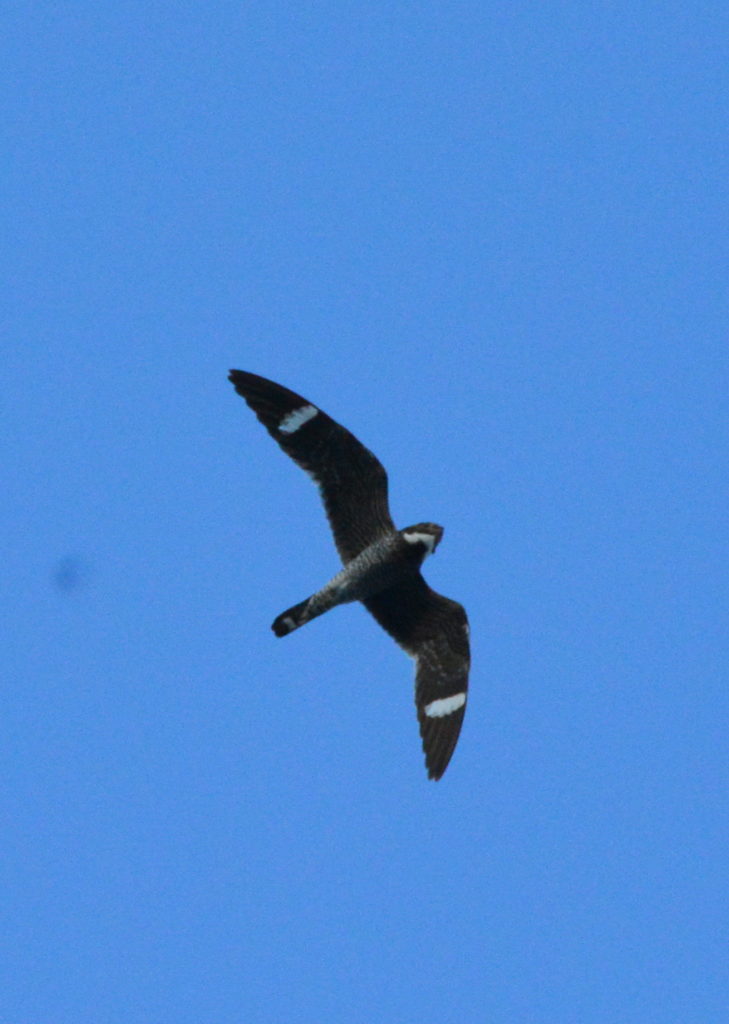
Common Nighthawk in flight (Photo by Karen Wade)
Nesting
Common Nighthawks nest on open ground, gravel beaches, openings in the forest floor and in our area, on gravel roof tops. Nighthawks, including the eggs and the young, have excellent camouflage in their nesting habitats. These birds need to be hidden from view, so the trend from older style roofs with pebbles to rubber roofs without pebbles is not a good one. This shift leads to a decrease in prime nighthawk nesting habitat. If you can influence a roofing company to keep a corner of the roof covered in pebbles, we can maintain sufficient nesting habitat.
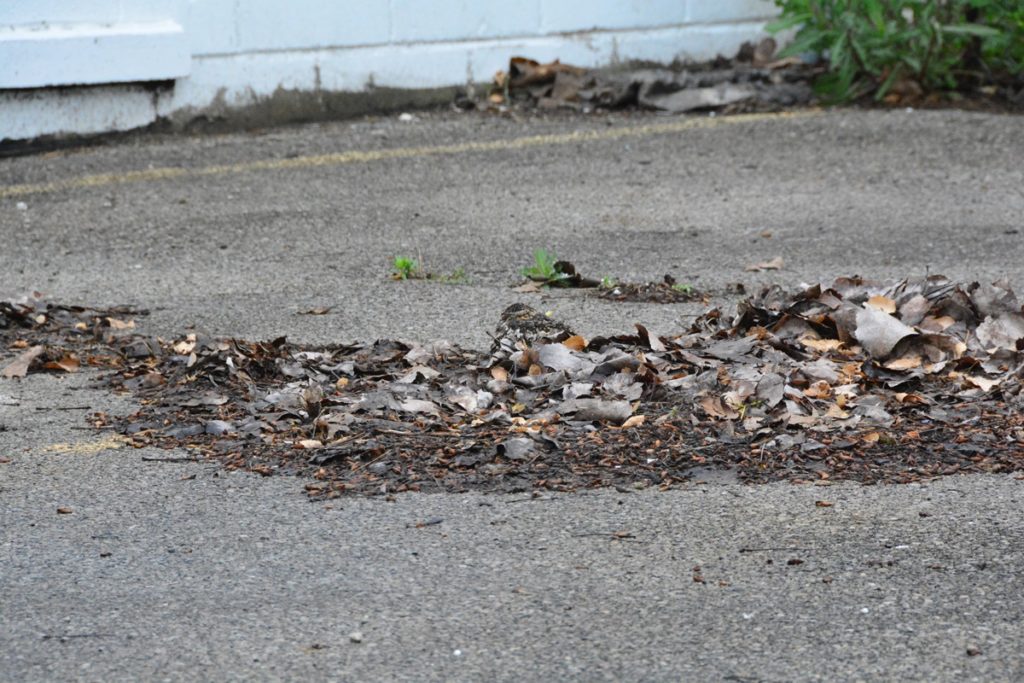
Common Nighthawk female, camouflaged on parking lot nest (Photo by Karen Wade)
The female lays just one or two eggs at a time, and the pair may have two broods in a season. Females are the primary incubators. At times she will stand over the young with open wings, creating a shade umbrella when needed.
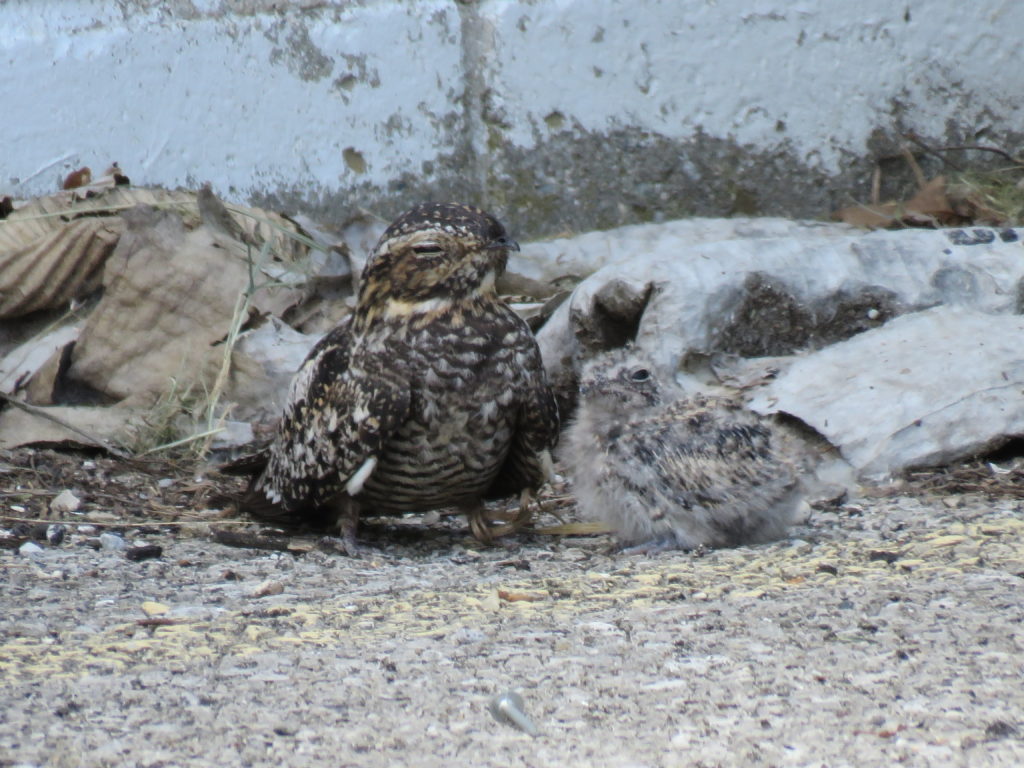
Common Nighthawk with nestling (Photo by Karen Wade)
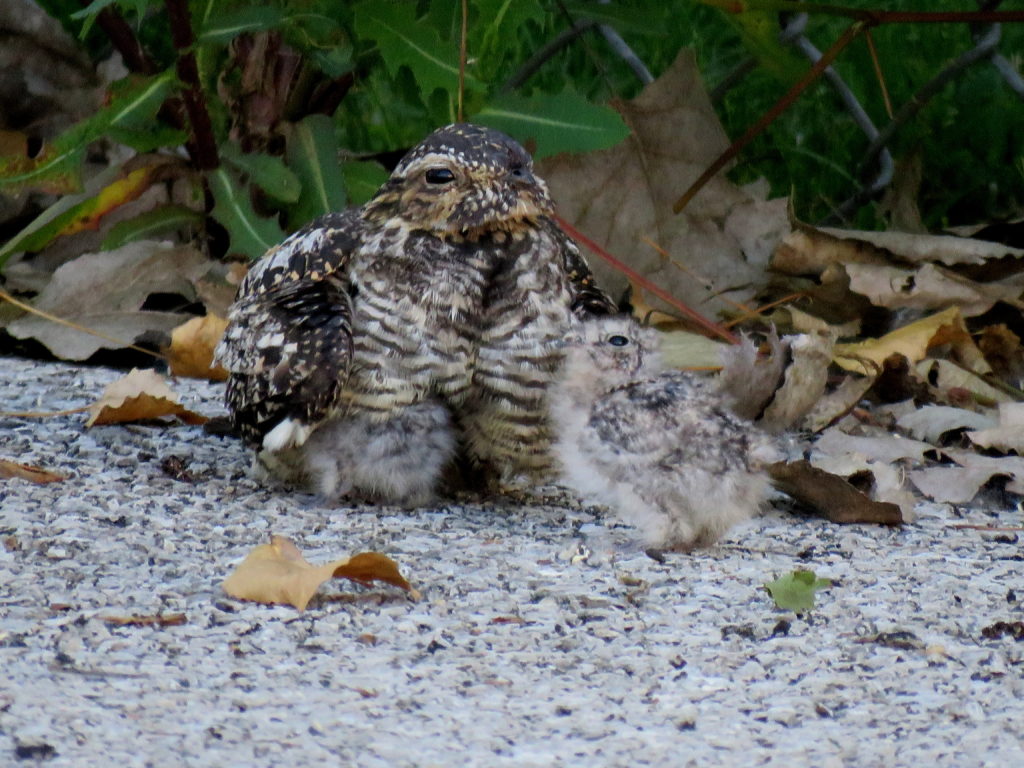
Common Nighthawk female with young (Photo by Karen Wade)
Diet & Distribution
Common Nighthawks eat flying insects exclusively. Once prey is sighted, the bird will fly toward it, open its beak, and maneuver to catch and swallow the insect. The young are fed these insects in regurgitated form – yummy!
As one would expect of a bird that is an insect-eater, Common Nighthawks migrate south with the change of the seasons. Often in late summertime, Bill Rapai, President of Grosse Pointe Audubon and my co-leader on bird walks, calls to inform me the migration is evident, with streams of nighthawks moving south over Lake St. Clair. Their journey may take them anywhere from 1,600 to 4,200 miles as they have been reported in Ecuador, Peru, Brazil and as far south as Argentina.
I hope that you get a chance to listen for these unique birds, and then look to the sky and experience these seasonal marvels.
Enjoy your birds!
-Rosann Kovalcik
Owner, Wild Birds Unlimited, Grosse Pointe Woods
Have you joined our email list? Click here to sign up, it’s free and gives you access to sales, coupons, nature news, events, and more!


